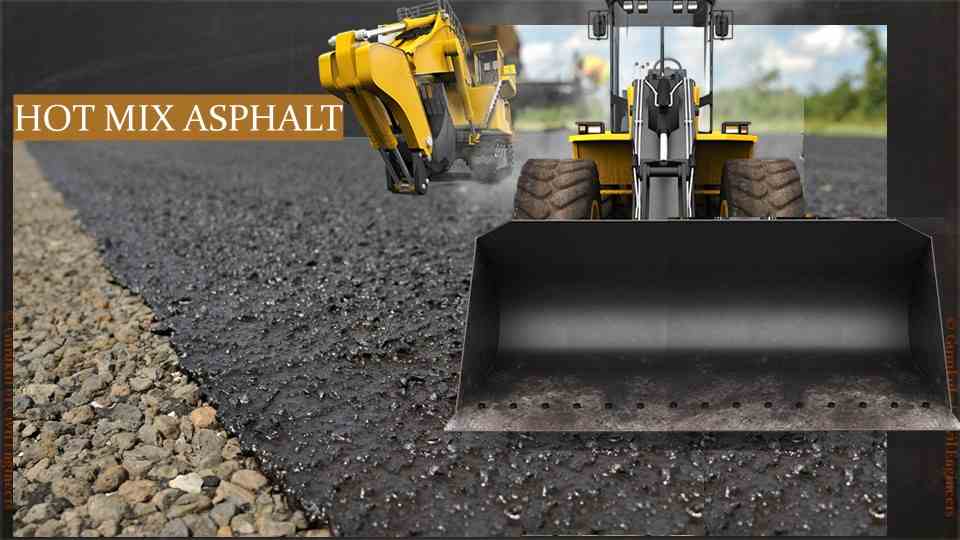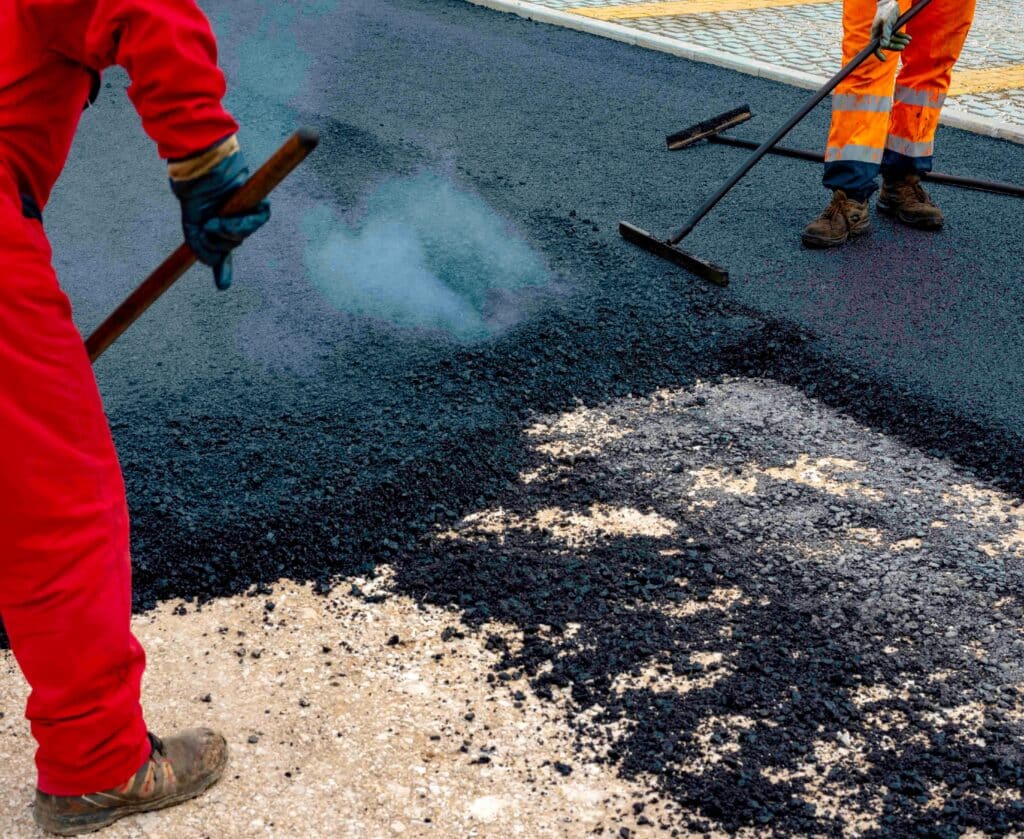Make Best Use Of Area Effectiveness with Hot Mix Asphalt Angled Parking Lot Solutions
Make Best Use Of Area Effectiveness with Hot Mix Asphalt Angled Parking Lot Solutions
Blog Article
Unlocking the Tricks of Warm Mix Asphalt Modern Technology
Exploring the depths of hot mix asphalt modern technology uncovers a world where careful processes and precise formulas assemble to form our roadways and infrastructure. The combination of aggregates, fillers, and binders isn't just a building and construction task but a strategic orchestration of toughness and effectiveness.
Significance of Warm Mix Asphalt
Hot Mix Asphalt plays a critical role in contemporary infrastructure development because of its durability and cost-effectiveness. As one of the most typically utilized paving product for roadways, freeways, and parking area, Warm Mix Asphalt offers a variety of advantages that contribute to its relevance in building and construction tasks. One vital benefit is its ability to stand up to rush hour lots and severe weather, supplying a reliable and lasting surface area for transportation networks. Furthermore, Hot Mix Asphalt is affordable in both preliminary building and construction and long-term upkeep, making it a preferred choice for lots of framework tasks.
The durability of Hot Mix Asphalt originates from its composition, which includes accumulations, binder, and filler materials that are very carefully selected and blended to satisfy particular performance requirements. This precise combination results in a versatile and strong sidewalk that can withstand regular use without considerable wear and tear. Hot Mix Asphalt is 100% recyclable, more enhancing its sustainability and environmental advantages. Generally, the significance of Warm Mix Asphalt in framework advancement can not be understated, as it proceeds to be a keystone of modern building and construction methods.
Parts of Asphalt Mixes
The make-up of asphalt blends consists of carefully selected accumulations, binder, and filler products that are critical for attaining certain efficiency requirements. Aggregates are the main component of asphalt blends, giving toughness and security. These accumulations can be natural, such as gravel or crushed stone, or artificial, like recycled products from old pavements. The binder, typically asphalt or asphalt cement, holds the aggregates with each other and supplies adaptability and longevity to the mix. The choice of the binder is crucial as it directly affects the mix's performance in different weather condition problems. Fillers, such as hydrated lime or Rose city concrete, are made use of to boost the mix's workability and aging resistance. Angled Parking.
The mix and proportion of these components play a considerable duty in identifying the high quality and efficiency of the asphalt mix. Designers very carefully develop the mix to meet particular requirements, thinking about factors like web traffic volume, climate conditions, and pavement lifespan. Proper option and balancing of accumulations, binder, and fillers are essential for developing sturdy, long-lasting asphalt pavements.
Mixing and Production Techniques

When the aggregates are chosen, the binder, usually asphalt concrete, is included in bind the products with each other. The binder's quality and amount significantly impact the mix's toughness, resistance, and adaptability to ecological elements. Furthermore, fillers like hydrated lime or Portland about his cement may be included to boost particular features of the asphalt mix, such as its workability or moisture resistance.
Throughout production, the accumulations and binder are heated up, usually in between 250-325 ° F(121-163 ° C ), to assist in blending and make certain proper finishing of the accumulations. The mixing process has to be detailed to attain a homogeneous mix that advertises the desired performance qualities of the asphalt. Different methods, such as batch blending or drum mixing, are used to accomplish regular and high-quality asphalt blends for construction projects.
Elements Influencing Asphalt Performance
Aspects influencing asphalt efficiency include a variety of variables that affect the sturdiness, longevity, and overall top quality of asphalt pavements. One key aspect is the quality of products utilized in the asphalt site link mix. The type and resource of aggregates, the binder top quality, and the additives all play a significant role in establishing the efficiency of the asphalt sidewalk. The gradation of aggregates is essential as it influences the mix's stability, workability, and resistance to splitting and rutting.

Design factors to consider, such as sidewalk thickness and drain, are important in making sure the long-lasting performance of the asphalt sidewalk. By carefully taking into consideration these aspects, specialists and designers can maximize asphalt efficiency and improve the solution life of pavements.
Sustainable Practices in Asphalt Technology

Additionally, the advancement of warm-mix asphalt (WMA) technologies has actually acquired grip in recent times. WMA permits the production and placement of asphalt mixes at reduced temperature levels contrasted to typical hot-mix asphalt, resulting in lowered power usage and greenhouse gas emissions. The use of porous asphalt mixes can aid reduce stormwater drainage concerns by allowing water to infiltrate with the sidewalk and right into the ground, advertising all-natural water filtering and charge procedures. By applying these sustainable practices, the asphalt market can add to developing a more eco-friendly and other resilient facilities network.
Verdict
To conclude, warm mix asphalt modern technology plays a crucial function in contemporary facilities growth due to its longevity and cost-effectiveness. By very carefully stabilizing elements, utilizing correct mixing techniques, and thinking about different variables, engineers can develop top quality asphalt mixes that hold up against hefty website traffic loads and severe weather. Accepting sustainable techniques, such as making use of warm-mix innovations and recycled products, better boosts the environmental kindness of asphalt modern technology.
Mixing and production techniques in warm mix asphalt innovation include the precise combination and processing of aggregates, binder, and fillers to develop a sturdy and high-performance asphalt mix.Elements influencing asphalt performance encompass an array of variables that influence the toughness, longevity, and total top quality of asphalt sidewalks. Sustainable techniques in asphalt modern technology encompass numerous campaigns aimed at minimizing the ecological influence of asphalt manufacturing and paving procedures. By including reclaimed asphalt pavement (RAP) and recycled asphalt roof shingles (RAS) right into brand-new asphalt mixes, the market can dramatically lower the consumption of raw products and energy, while additionally reducing landfill waste.
WMA permits for the production and positioning of asphalt mixes at reduced temperatures compared to conventional hot-mix asphalt, resulting in lowered energy consumption and greenhouse gas emissions.
Report this page